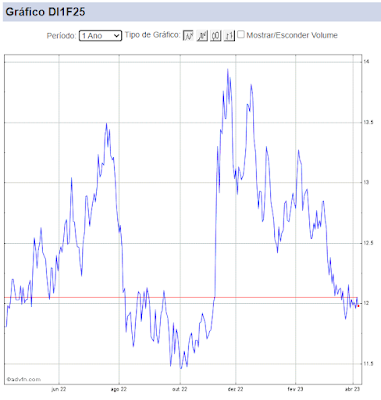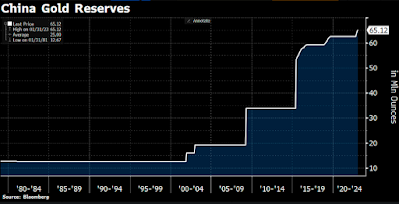Fed e Rússia
Acho válido fazermos uma breve
comparação do cenário atual com aquele verificado em agosto/setembro de 1998,
quando eclodiu a primeira crise da Rússia. Naquele momento, os juros nos EUA
eram de 5.50%. O Fed decidiu por reduzir as taxas em 25bps, e acabou fazendo um
ciclo total de 75bps de queda de juros nos meses subsequentes. Fazendo uma
breve leitura das Minutas daquela reunião do FOMC do setembro de 1998 (vide
abaixo), observamos um cenário muito parecido com o atual. Uma diferença
relevante é que, naquele momento, o Fed tinha “munição” para utilizar, leia-se,
baixar os juros. Hoje, a crise na Rússia parece menor, e muito mais contida do
que em 1998 (pelo menos por enquanto). Contudo, a “munição” do Fed é muito
menor já que os juros já estão a zero e o QE vem perdendo potencia a algum
tempo.
Em suma, dado os últimos
desenvolvimentos ao redor do mundo, o Fed pode se dar ao luxo de manter as
condições monetárias expansionistas e, inclusive, manter o “considerable
time” no comunicado.
Fed Statement Sept 1998:
|
The Federal Open Market Committee decided today to ease the stance of
monetary policy slightly, expecting the federal funds rate to decline 1/4
percentage point to around 5-1/4 percent.
The action was taken to cushion the effects on prospective economic growth
in the United States of increasing weakness in foreign economies and of less
accommodative financial conditions domestically. The recent changes in the
global economy and adjustments in U.S. financial markets mean that a slightly
lower federal funds rate should now be consistent with keeping inflation low
and sustaining economic growth going forward.
The discount rate remains unchanged at 5 percent.
|
Fed Minutes Sept 1998:
In the Committee's discussion of current and
prospective economic conditions, members focused on developments that pointed
to the potential for a significant weakening in the growth of spending. They
recognized that there were at present few statistical indications that the
economy was on a significantly slower growth track. Indeed, the available data suggested that
consumer expenditures and business investment retained considerable strength. At the same time, however, investors'
perceptions of risks and their aversion to taking on more risk had increased
markedly in financial markets around the world. That change in sentiment was
exacerbating financial and economic problems in a number of important trading
partners of the United States. In addition, it was generating lower equity
prices and tightening credit availability in U.S. financial markets. As a
consequence, the downside risks to the domestic expansion appeared to have
risen substantially in recent weeks. Though
labor markets were expected to remain relatively tight for some time, the
members saw little prospect that inflation would gather significant momentum in
coming quarters. Declining
commodity and other import prices would be restraining prices and inflation
expectations for a while. Overall consumer prices might rise a
little more rapidly next year as the effects of a number of favorable factors,
such as falling energy prices, diminished or reversed, but underlying inflation was expected to stay
quite subdued as inflation expectations remained damped and pressures in labor
markets became less pronounced.
The intensification and further spread of
turmoil in international financial markets, notably since the outbreak of a
financial crisis in Russia in mid-August, had spilled over into U.S. financial
markets. Strong demands for safety and liquidity had driven down yields on U.S.
Treasury securities, but spreads of private rates over Treasury rates had
gapped higher. Increases in risk spreads were especially large for lower-grade
borrowers and on bonds below investment grade, whose rates had increased
considerably since mid-August. In addition, many banks had tightened their
credit standards and terms. Prices in U.S. equity markets, which had
weakened appreciably before the crisis in Russia, had declined substantially
further. These market developments strongly suggested, and anecdotal reports
tended to confirm, the emergence of widespread perceptions of greater risks in
a broad range of financial investment activities and of considerably greater
reluctance to put capital at risk. The members did not believe that the tightness in credit markets and
strong demand for safety and liquidity were likely to lead to a "credit
crunch," though some members expressed the view that such an outcome could
not be ruled out. At a time when business balance sheets
already indicated a significant softening of cash flows owing to weaker
profits, many business firms were experiencing increased difficulty and costs
in their efforts to raise funds in debt or equity markets or to borrow from
lending institutions; if these conditions were to persist, the sustainability
of the current strength in business capital expenditures would come into
question. The decline in stock market prices also appeared likely to damp the
growth of consumer spending over time, with added implications for business
capital expenditures.
Despite the emergence of decidedly less
hospitable financial conditions, there were few indications in the data
available to the Committee of any weakening as yet in consumer and business
spending. Consumer expenditures, though temporarily
held back by shortages of new motor vehicles stemming from the work stoppage at
General Motors, had remained on a solid uptrend, with overall growth in recent
months apparently slipping only a little from a remarkably rapid pace in the
first half of the year. Strong
growth in jobs and incomes along with substantial further increases in stock
market prices through mid-July had fostered a high level of consumer confidence
and spending. Members
commented that the more recent weakness in the stock market and the related
decline in household net worth had removed an important support for the growth
of consumer spending, but they noted that recent surveys indicated only a
slight deterioration in consumer sentiment and that the stimulus from earlier
stock market gains probably would dissipate only gradually. Looking further
ahead, consumer spending could be expected to expand at a pace that was more in
line with the growth of household incomes than it had been in recent years.


Comentários
Postar um comentário